The Pleasures of Precision
In which Norm claws out some happiness in this miserable world by spinning up a quartet of Steven Soderbergh pictures in glorious 4K.
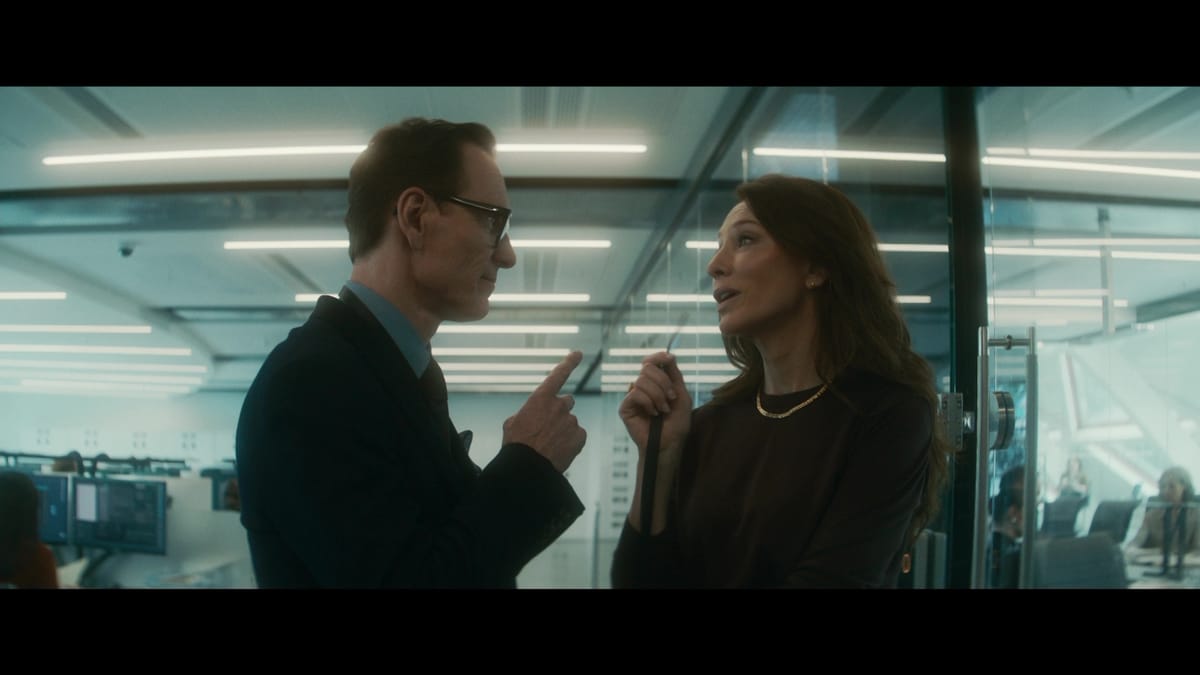
Yes, yes, the world is going to hell and … actually, that’s pretty much the state of it. The world is going to hell. But at least Steven Soderbergh is here to distract us.
In the last few weeks, no fewer than four of his movies have dropped on 4K disc: Presence and Black Bag just hit the new-release shelves from Universal and Decal, respectively, and his mid-2000s The Good German and The Informant! are back in spiffy UHD upgrades courtesy of Warner. So obviously I’m going to talk your ear off about them, because Soderbergh is my favorite filmmaker and why wouldn’t I.
Let’s start with the freshest titles, Presence and Black Bag – both written by David Koepp, who applies his fondness for deconstructing genre tropes to horror movies and espionage thrillers. And just as his script for Kimi let Soderbergh recontextualize the paranoid thriller for the age of COVID, these give Soderbergh the space to work his minimalist magic, taking a familiar premise and paring it down to its essential elements.
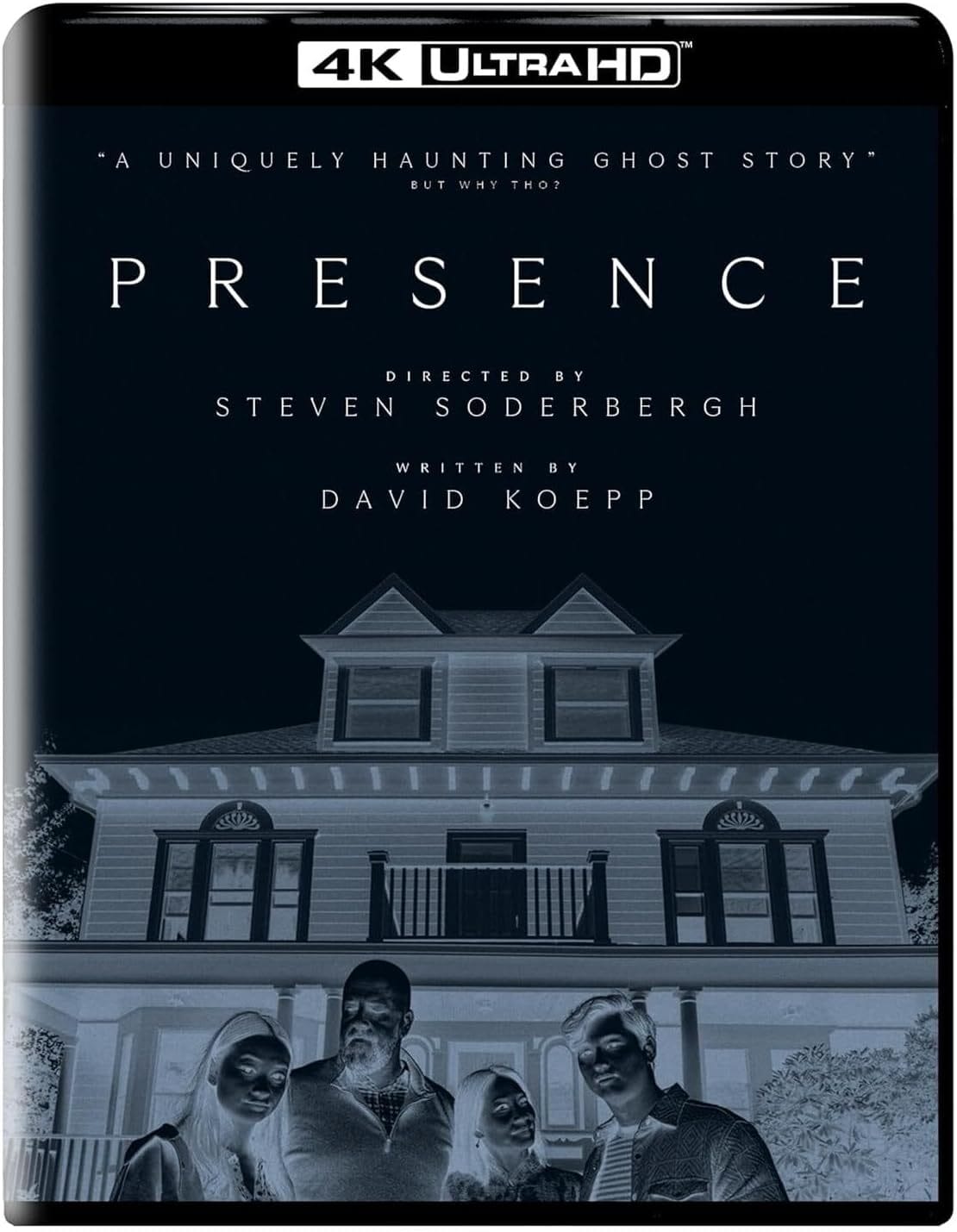
Presence is Soderbergh’s first ghost story, a measured creeper in which an ordinary family of four (Lucy Liu and Chris Sullivan as the parents, Callina Liang and Eddy Maday as their teenage kids) comes to believe that a supernatural entity is haunting their house – and we know they're right, because we've been sharing its point of view all along.

The title treatment references Poltergeist to let us know the shape of the narrative, but Presence has as much of a connection to that film as it does to Koepp's more-or-less forgotten Ricky Gervais comedy Ghost Town; Koepp's script is a genre puzzle box, using the tropes of the Paranormal Activity series to explore more ordinary concerns like marriages and mourning.
All of Soderbergh's strengths are represented here: His ease with actors, his unerring sense of where to put the camera, his facility with pacing – though since every scene is presented as a single unbroken take, his editorial pseudonym feels like a joke on a joke here. But Presence's voyeuristic perspective forces us to scrutinize both the meaning of the family's activities and the spectator's own intentions; the camera is us, endlessly watching these people but (mostly) unnoticed and (nearly) impotent to help or harm them. It’s a drama, it’s a thriller, it’s a tragedy. It’s a different kind of scary.
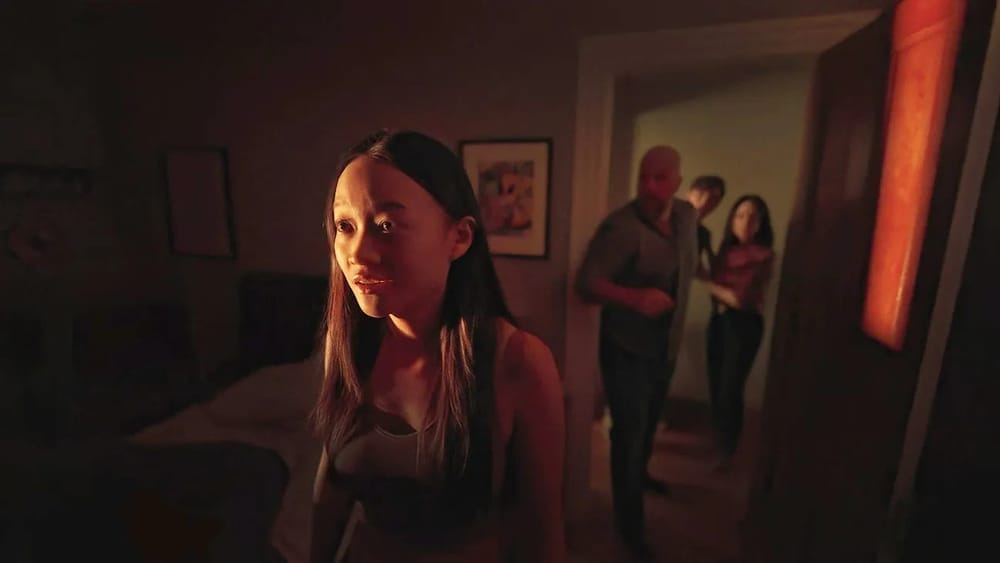
Canadian readers may experience some sticker shock on this one; Elevation Pictures didn’t bother with a physical edition of Presence, so retailers have been importing Decal Releasing’s 4K and Blu-ray discs from the US – which, sadly, offer no special features of any kind. Boo.
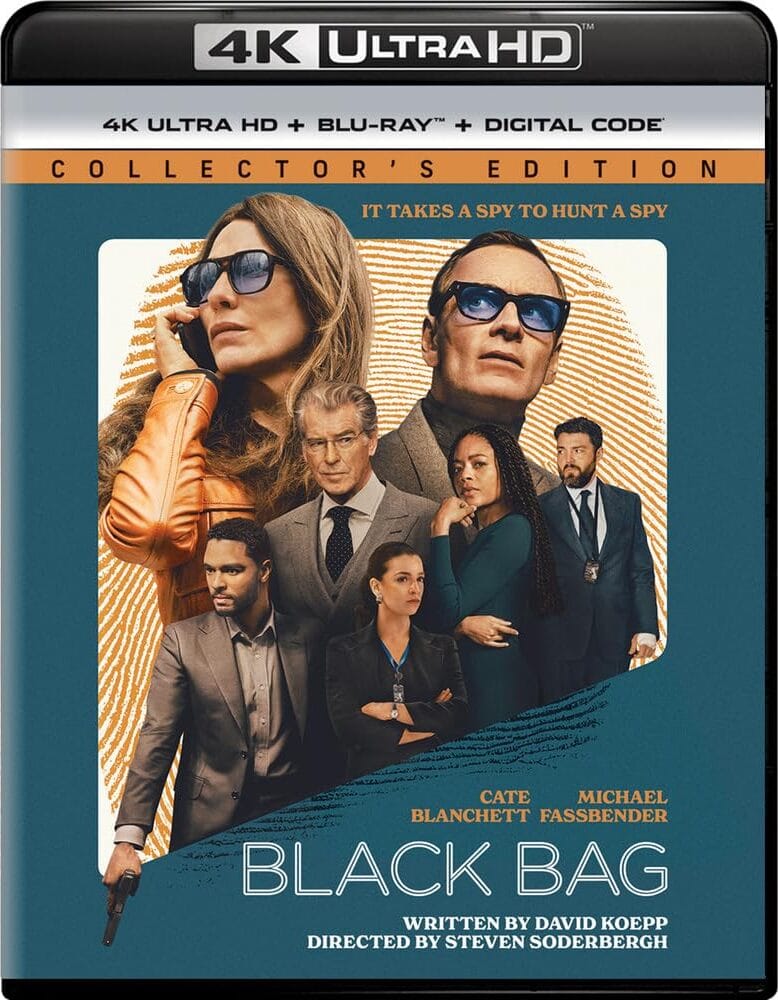
Universal’s physical release of Black Bag does come with a modest supplemental package, though of course the movie itself is the star, a sleek and unfailingly professional spin on the classic mole-hunt thriller.
Michael Fassbender – who had a small role in Haywire as a British operative who was almost certainly supposed to be James Bond – stars as chilly intelligence expert George Woodhouse, who’s been tasked with finding a mole in His Majesty’s secret service – and to do it before said mole releases a mysterious program known as Severus into the wild, resulting in the deaths of untold thousands. There are five possible candidates, all of whom George knows personally. One of them is his wife, Kathryn, played by Cate Blanchett.
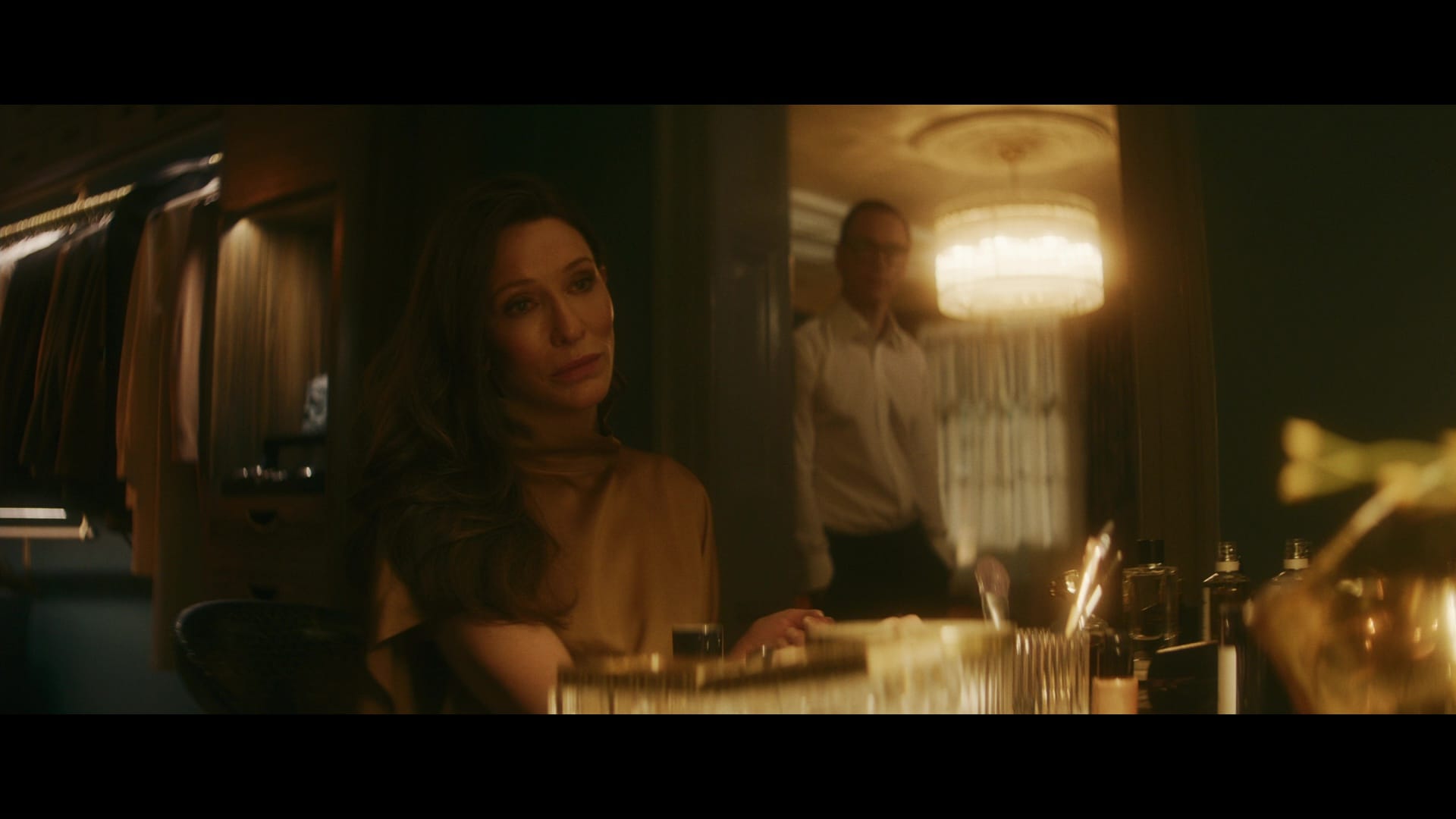
It would be pleasurable enough to watch Fassbender and Blanchett exchange ambiguous looks for an hour and a half, but Koepp and Soderbergh immediately extend that courtesy to their entire cast, with George and Kathryn inviting the other four suspects – played by Marisa Abel, Tom Burke, Naomie Harris and Regé-Jean Page – to a dinner party so George can get a sense of their various relationship dynamics, and find any relevant soft spots.
It’s Who’s Afraid of George Smiley?, and that’s just the first act of the film; Koepp and Soderbergh have other games to play, some of them involving actual former Bond Pierce Brosnan as a pissy bureau chief, and how lucky we are to have been included. One really ought to send them a thank-you note.
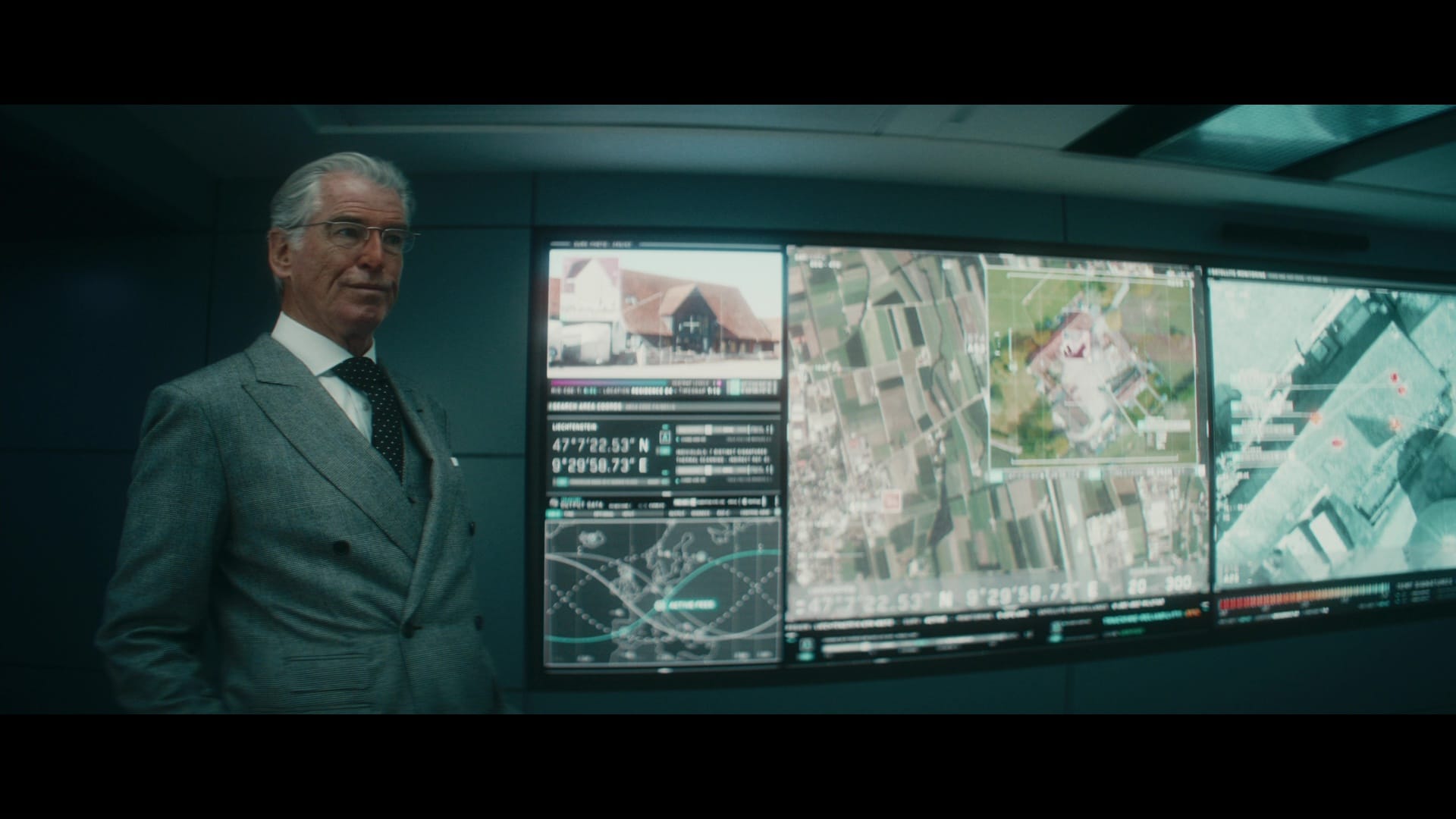
Both Presence and Black Bag got knocked in the press for their supposedly chilly style, but I don’t see it; the alienated lens of the former served to remind me just how desperate the eponymous entity is to connect to the humans it’s trapped with, while the latter’s gleaming world of manicured surfaces, tailored clothes and measured conversations is explicitly designed to make us look closely at everything in front of us, just as George does, searching for the crack in the façade that reveals the truth. And on repeat viewing, once you know everyone’s deal, it’s even more fun to watch the characters of Black Bag snipe and prod at each other, everyone trying to provoke a reaction – or create a distraction.
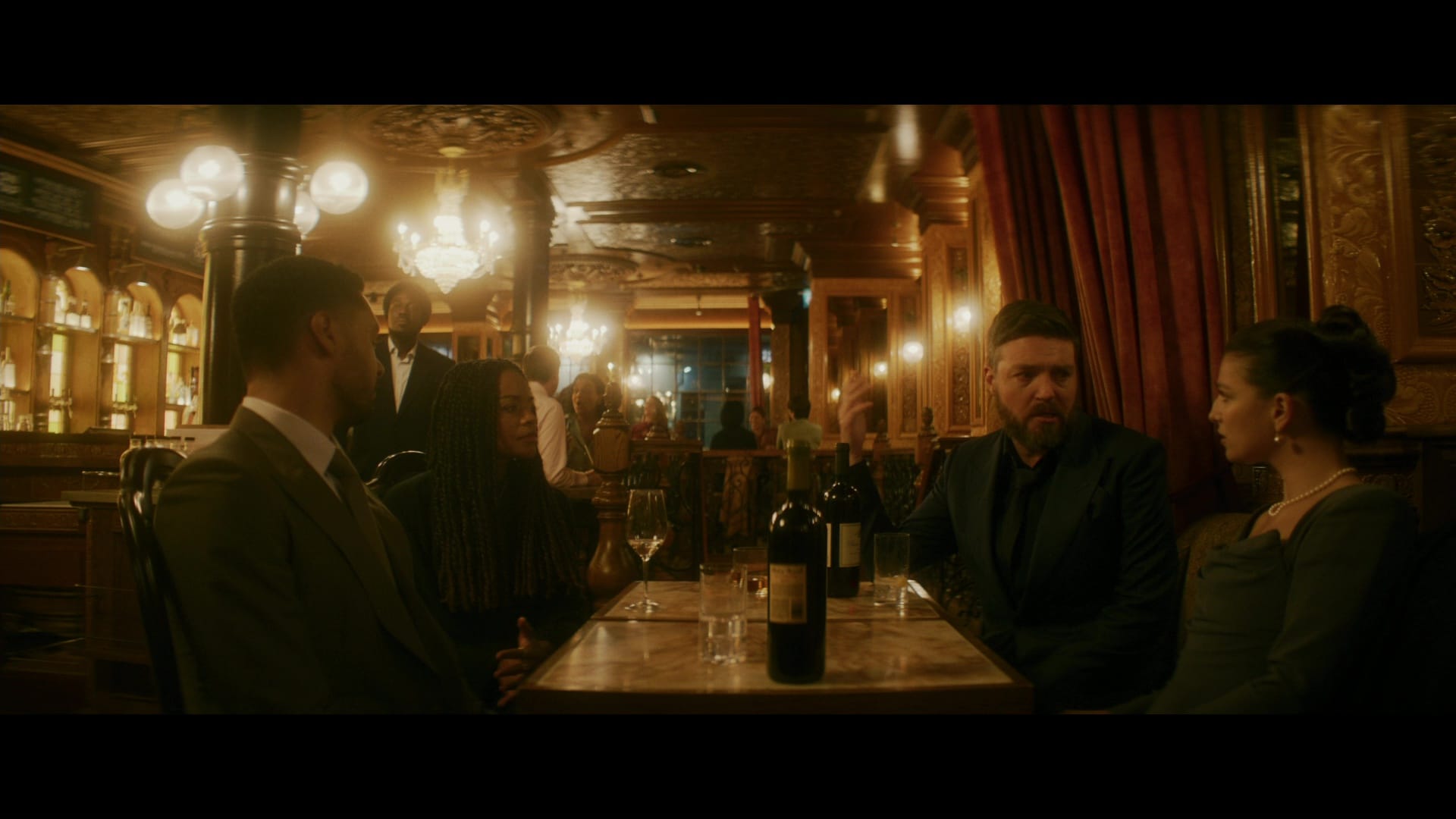
“The Company of Talent” finds the cast basically admitting the whole thing was a blast, with Blanchett (whose previous collaboration with Soderbergh was much more sober, as you’ll see) and Fassbender particularly delighted to work with a director who knows exactly what he wants. A second featurette, “Designing Black Bag,” surprised me by revealing that the film’s MI6 office location was built in a London office tower, while the Woodhouse home was a set – with multiple levels and interconnecting rooms – built on a soundstage. I would have sworn it was the other way around. And a trio of deleted scenes reminds us that even the smallest trims can shift the focus of a scene, or change its meaning entirely – and that Soderbergh’s editorial chops are as sharp as ever.
The Good German and The Informant! are similarly efficient constructions, come to think of it, each of them letting Soderbergh riff on a certain type of picture. The Good German, obviously, is his Casablanca, with Blanchett and George Clooney as his Bergman and Bogart, and The Informant! is a little more niche, being a ’70s-flavored corporate farce starring Matt Damon as the world’s worst whistleblower.
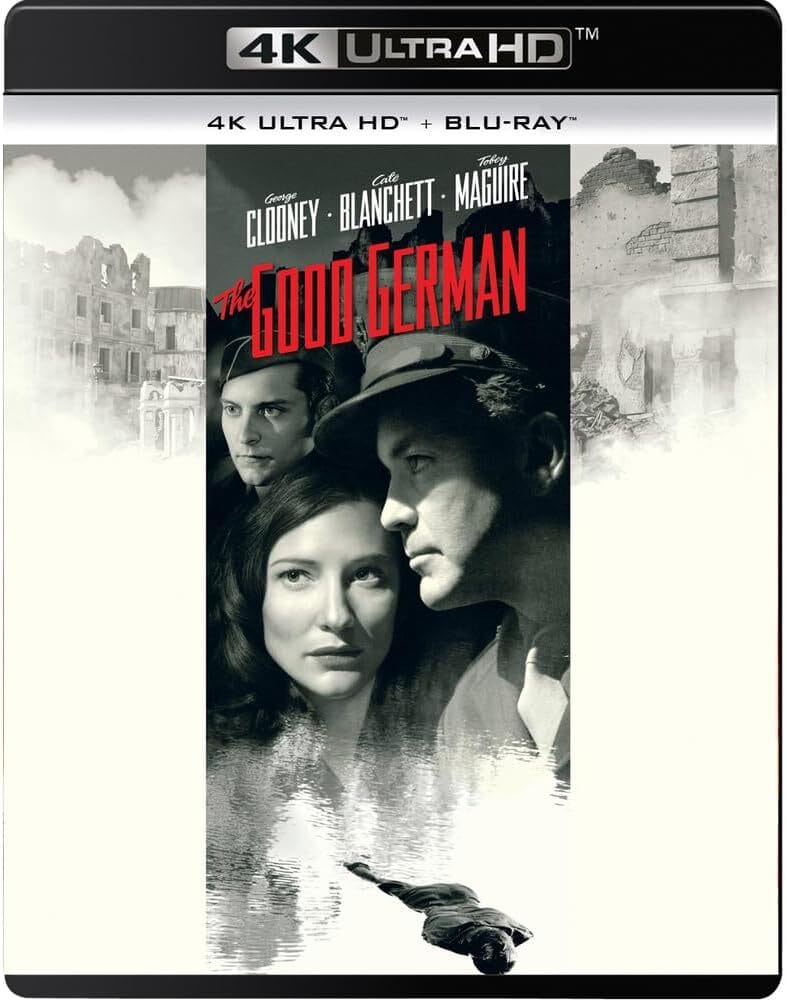
When I say The Good German is Soderbergh’s Casablanca, I mean that literally: Paul Attanasio’s screenplay may be based on Joseph Kanon’s 2001 novel, but in form and function it is a loving tribute to Michael Curtiz’ 1942 classic of lost loves and divided loyalties, a black-and-white, studio-bound production that takes its key cues – lighting, wardrobe, set design – from the earlier film.
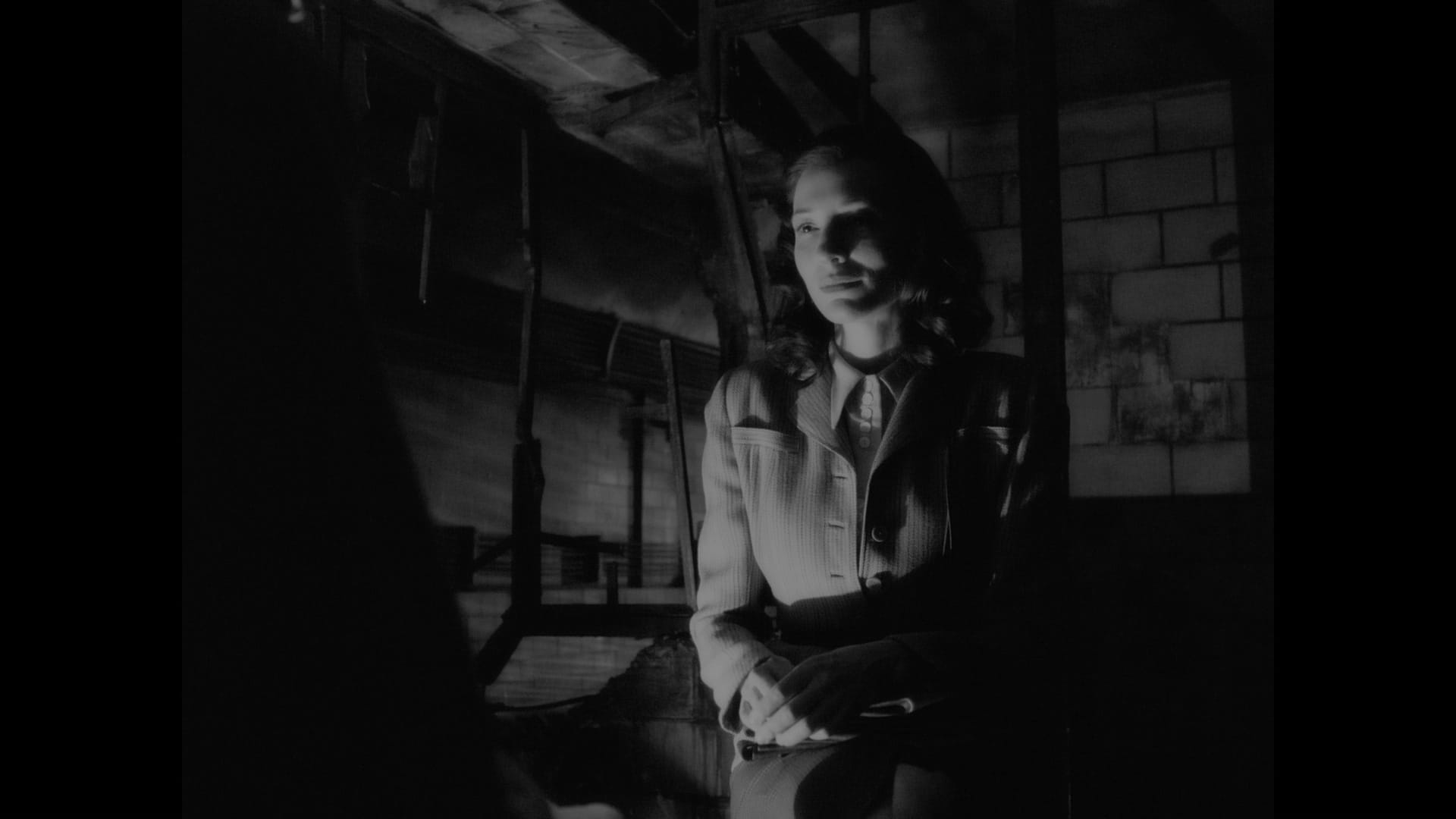
Soderbergh wanted to tell Kanon’s story – set in post-surrender Berlin, and following an embittered American journalist who finds himself reunited with the German lover he'd thought dead – with all the conventions and practical restrictions of its era. Except for the violence and language, which feel even more jarring when they pierce the 1940s aesthetic.
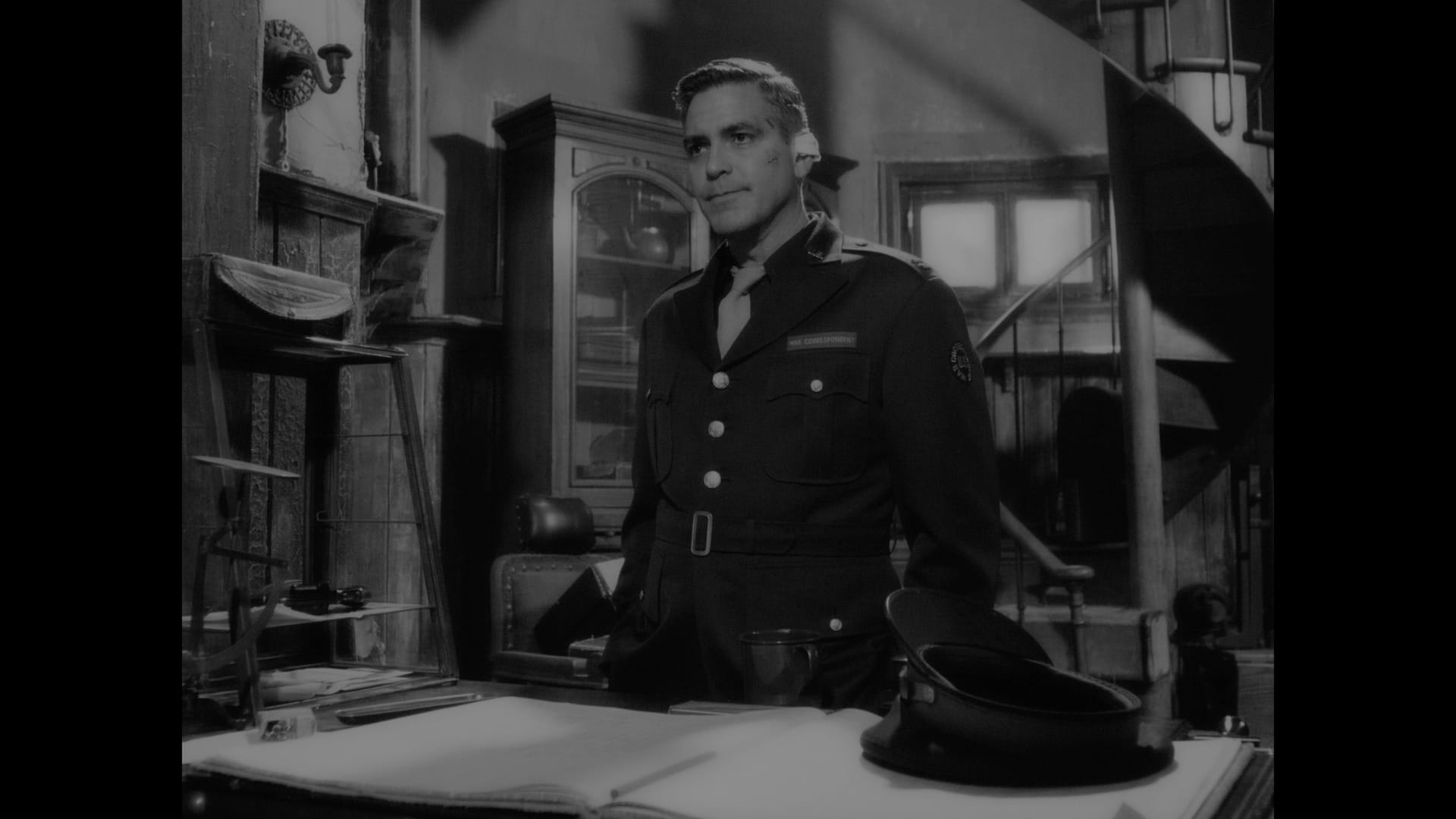
It’s a compelling experiment, even if it doesn’t exactly work as its own movie; the problem with staking your entire picture on one of the greatest films ever made is that it can’t help but seem like a lesser copy, as Gus Van Sant had discovered a few years earlier with his Psycho remake. One of these days, I’ll get the two of them to dig into these projects on a panel somewhere; that’ll be fun.
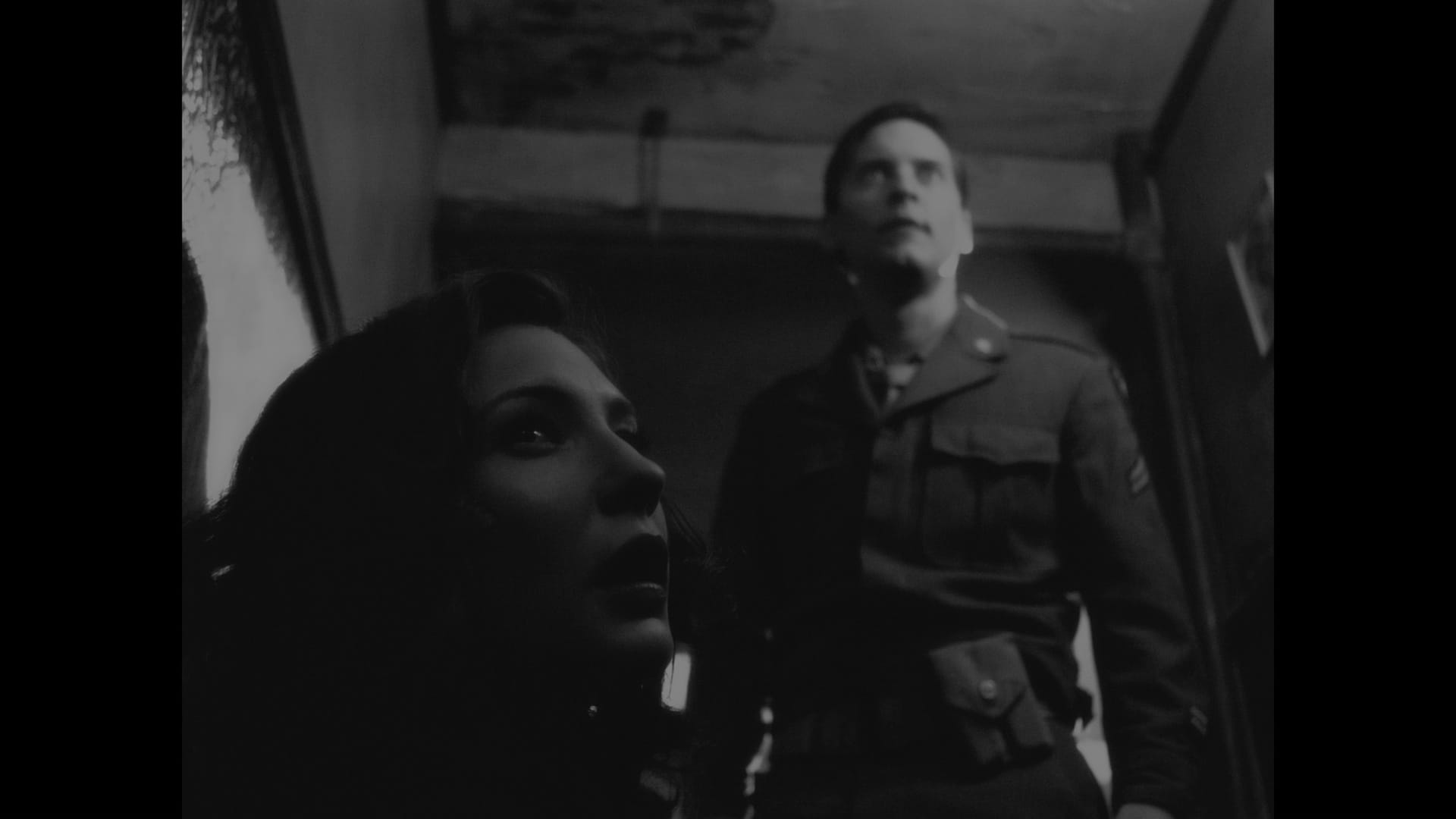
Time and familiarity make it a more interesting experience now, I suppose; Tobey Maguire’s thuggish swagger as Clooney’s casually amoral military driver feels like it speaks to the actor’s own sense that he might be miscast, and Blanchett’s elegance is exactly what’s required for the role of the hollow Lena Brandt, whose ability to rationalize her way out of any situation has allowed her body to survive the war, but not her soul. And while Clooney’s very good, he knows he’s not Bogart. Which might be the point – no one could be Bogart, so why try to be? – but it also leaves us wanting when the credits roll.
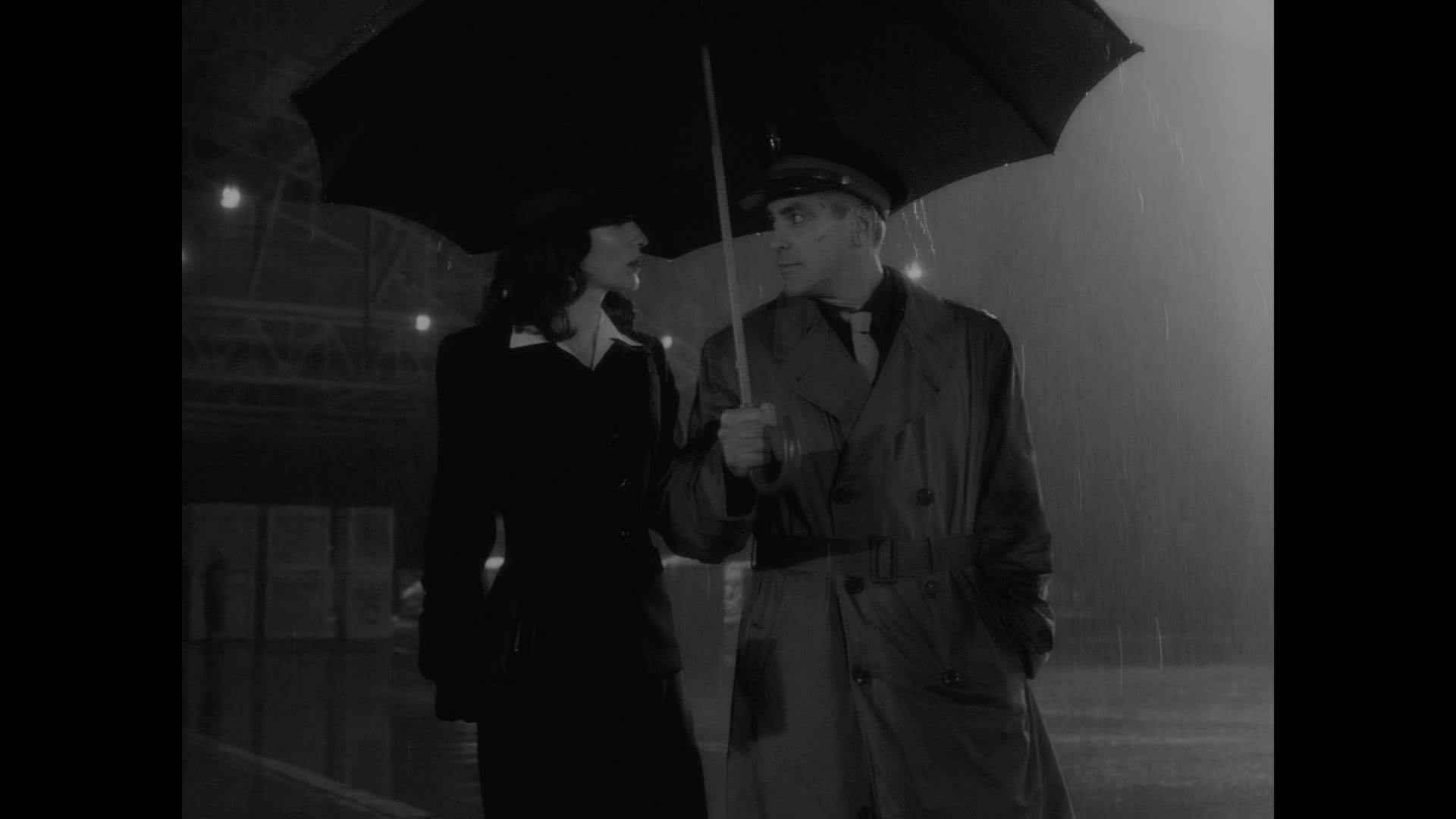
Still, it’s a gorgeous-looking picture and the new UHD master – which was also the source for the companion Blu-ray – lets us luxuriate in the pearlescent texture of Soderbergh’s black-and-white process shots, properly framed in the 1.37:1 Academy ratio. He really did re-create the look and feel of a Warner studio production, right down to the credits font. I’m surprised they talked him out of releasing it in mono; the multichannel soundtrack is faithfully replicated here in DTS-HD 5.1.
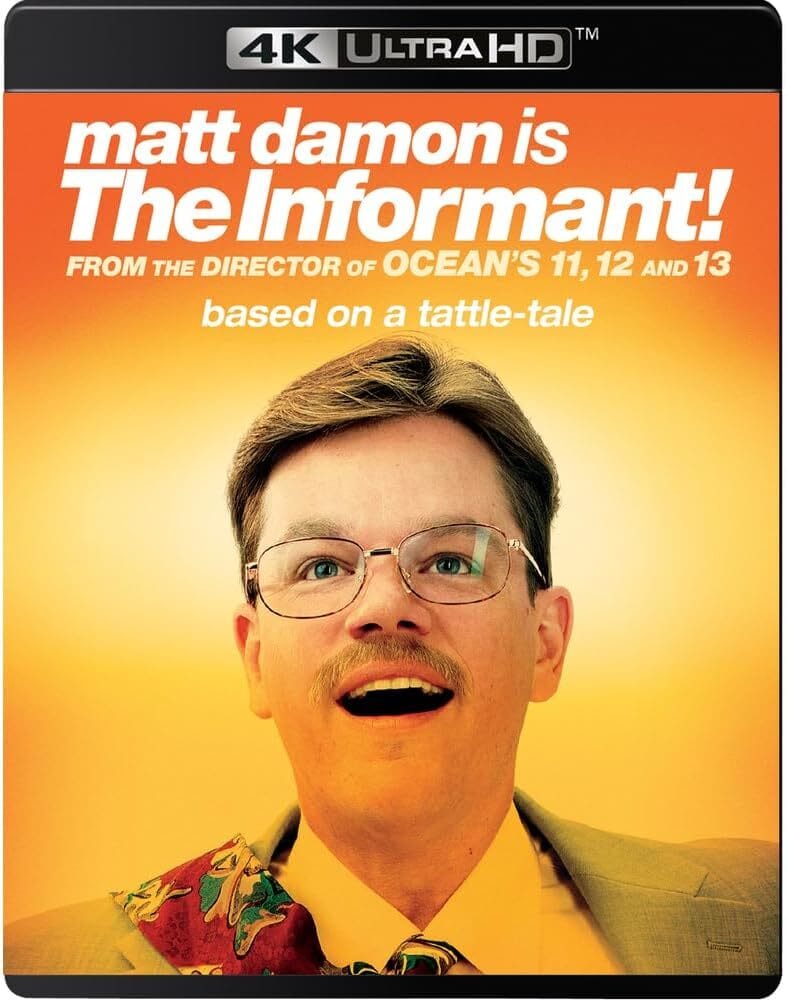
The Informant! is a more modern affair in every way, from its digital cinematography to its zippy pace; a stranger-than-fiction comedy about Mark Whitacre, an executive at the agribusiness conglomerate Archer Daniels Midland, who in the early ’90s led the FBI to expose a massive price-fixing scandal … and implicating himself in a number of other crimes along the way.
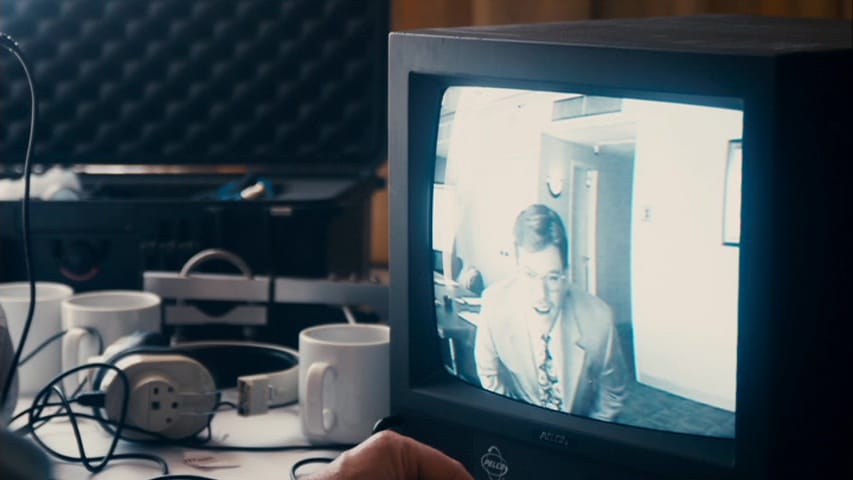
Is that a spoiler? I don’t think it’s a spoiler, because The Informant! keeps tripping over its own metastasizing narrative, leaving us as unmoored as its hero turns out to be. Mark’s inner monologue rambles on through the entire picture, spewing factoids and observations and bullshit in more or less equal proportions; it’s the sound of a man convincing himself he’s telling the truth, and actively excluding anything that contradicts his story, even when such evidence is laid out right in front of him.

I think this might be Matt Damon’s finest performance, playing notes we recognize from Tom Ripley and Jason Bourne and the Oceans movies’ Linus Caldwell but arranging them for an oompah band, fussing and sweating and cursing all the way while Melanie Lynskey coddles him as Whitacre’s supportive wife Ginger, worried he’ll work himself into a fit. He’s weirdly pissy with his FBI handlers (Scott Bakula and Joel McHale), a detail that seems stranger and more confusing when we realize how deferentially he treats his bosses at ADM: Is he setting them up? Is he setting the FBI up? What does this guy want, exactly?
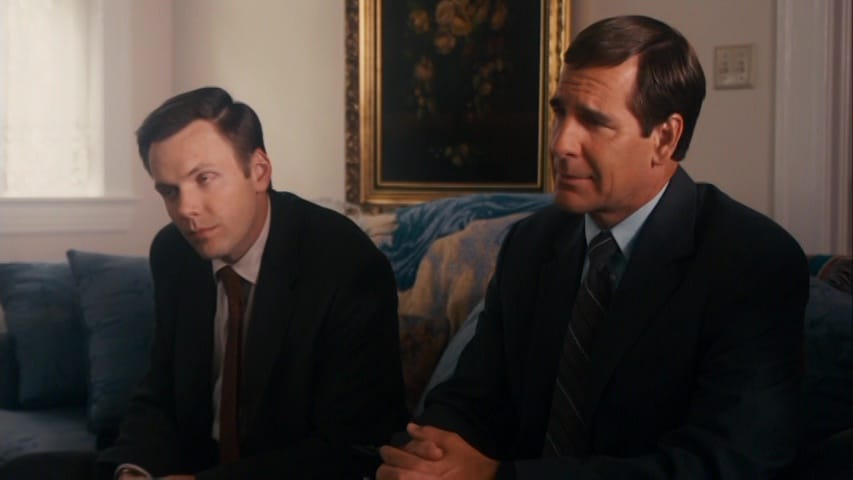
Damon’s always been a great scene partner, but Soderbergh’s decision to cast the film entirely with comic actors subtly destabilizes the story: People like Bakula and McHale (and Paul F. Tompkins, and Andy Daly, and Patton Oswalt, and Scott Adsit, and Thomas F. Wilson, and dozens more) to have a certain energy, initially making Whitacre seem like the straight man in a sea of weirdos. Once we figure out Whitacre is the weirdest person in the room, then it gets funny. By the time Dick and Tommy Smothers turn up, it’s goddamn hilarious. And maybe a little sad. But that’s Mark’s own fault.
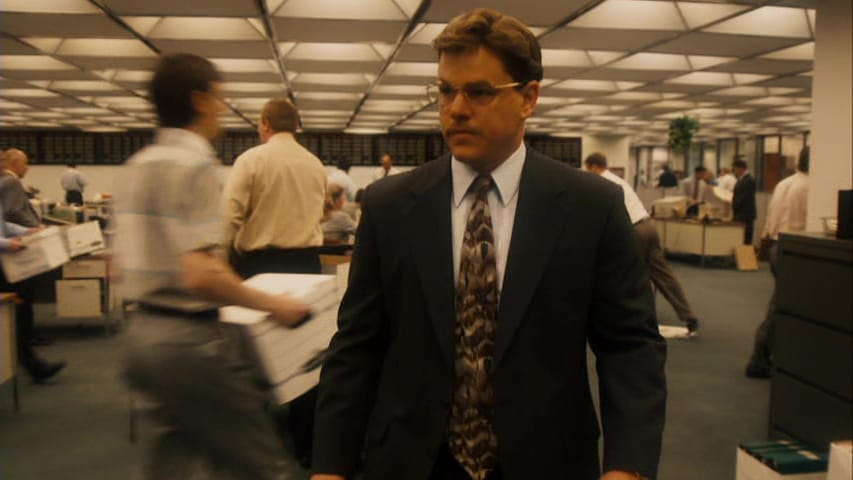
Warner’s 4K upgrade of The Informant! – no Blu-ray for this one – is a very elegant remaster, with an HDR grade that subtly pushes the ’70s-influenced color scheme of yellows, browns and oranges a little further than earlier masters could, but never exposes the limitations of a 2008-era RED camera. There’s obvious motion blur in one scene about halfway through the picture, during an argument between Mark and Ginger, but that’s always been there; I noticed it when I saw the film in 2009, and it was present in Warner’s original Blu-ray. It might be a little more obvious at 2160p, but I don’t think so.
The modest supplemental section from the Informant! Blu-ray is carried over in its entirety: A relaxed, informative audio commentary from Soderbergh and screenwriter Scott Z. Burns, and four deleted scenes – while the only extra on The Good German is the theatrical trailer. Oddly, and increasingly rare for a Warner 4K catalogue release, The Good German is available in a 4K/BD combo while The Informant! is 4K-only. Inscrutable to the last, that one.
Black Bag is now available in 4K/Blu-ray and Blu-ray editions from Universal Studios Home Entertainment; The Good German is available in the same configurations from Warner Bros. Discovery Home Entertainment, while the label’s release of The Informant! is 4K-only. And Presence is available in individual 4K and Blu-ray editions from Decal Releasing. It’s not too late to change your mind, Elevation!
Up next: Shout! Studios rides the Blaxploitation wave with a righteous new box set, and The Alto Knights and The Woman in the Yard make their Blu-ray debuts. Stand by.
